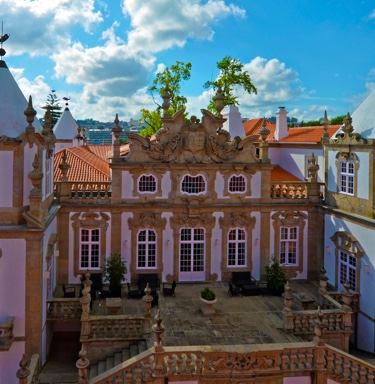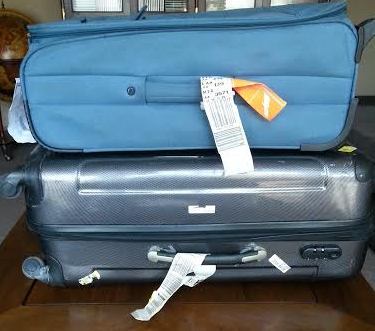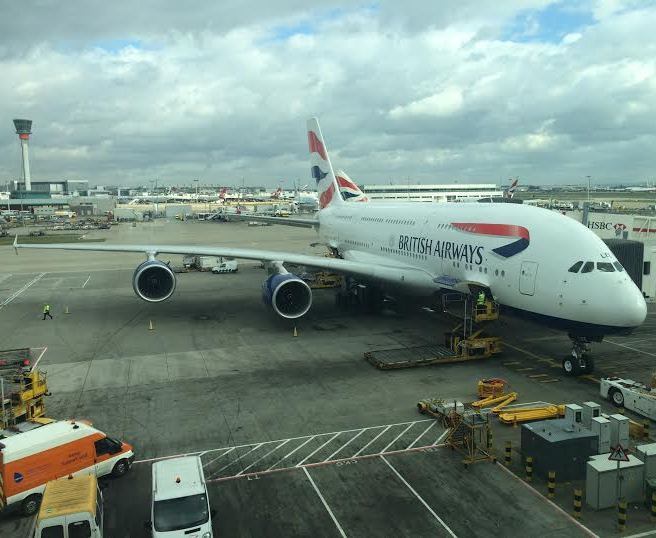Travel Tips
Spotlight On: National and State Parks
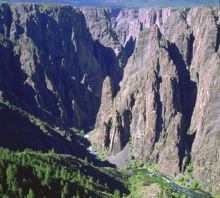 Yearning for the great outdoors? If so, the country’s state and national parks are the perfect – and most popular – place to go for R&R, adventure, nature-sighting and just plain fun.
Yearning for the great outdoors? If so, the country’s state and national parks are the perfect – and most popular – place to go for R&R, adventure, nature-sighting and just plain fun.
This morning on CBS’ The Early Show, Peter talked about four fabulous national parks. Some of them you may have heard of, but some are lesser-known – though equally magnificent.
Here we spotlight not only those parks, but also four of the country’s many unheralded state parks.
State parks allow you to enjoy America’s great natural treasures away from the madding crowds who tend to flock to the higher-profile parks.
You may even save yourself a buck or two on entrance and camping fees.
NATIONAL PARKS
Acadia National Park: Not only is Acadia National Park in Maine the easternmost park in the United States, but the park’s Cadillac Mountain is the first location in the country where you can see the sun rise in the morning.
Located on Mt. Desert Island, Acadia was the first national park to be established east of the Mississippi River and is located near the popular town of Bar Harbor. Characterized by beautiful wooded areas and rugged coastline, you can either explore the park on foot, by bike or by shuttle.
Acadia’s 45 miles of carriage roads, built by John D. Rockefeller Jr., are some of the finest broken-stone roads still in existence in America. Since the roads were originally built for horse-drawn carriage, why not see the park the old fashioned way with Carriages of Acadia? A ride only costs about $18.
The roads are also good for hiking, but if you prefer two wheels, you can rent bikes through Acadia Bike for $20 a day. Another alternative is to take the Island Explorer shuttle, which will whisk you around the park’s 27-mile scenic loop road for free.
The list of activities is rounded out by free ranger-led programs which include nature walks and stargazing trips, and a visit to Thunder Hole an inlet with crashing waves that – you guess it – sound like thunder. And of course don’t miss the sunrise – the best way to ensure you see it at its maximum splendor is by getting up really early and driving to the summit of Cadillac Mountain before dawn.
Admission to Acadia is only $20 per car and is good for seven days. A family of four will spend about $60 to camp for two nights, while a night The charming Balance Rock Inn in Bar Harbor will set you back about $125.
Shenandoah National Park: Shenandoah may only be 75 miles from the Washington D.C. area, but it feels like it’s a zillion light-years away. 500 miles of hiking trails (including part of the Appalachian Trail), the spectacular vistas along Skyline Drive and the majestic oaks and waterfalls make Shenandoah a memorable place to spend a day – or a week.
Those who only have a few hours to spare will want to hit Skyline Drive, whose 105-mile route along the crest of the Blue Ridge Mountains offers stunning views of the Shenandoah Valley and 75 overlooks where you can stop to take photographs. You can experience Skyline Drive either by car or by bike.
If you have more time, hit a hiking trail. Hiking is by far the most popular activity, with not only 100 miles of the Appalachian Trail, but also many other trails passing through the park. A favorite is the White Oak Canyon Trail, which takes less than four hours to complete and includes a waterfall overlook where you can have a picnic.
For something different, try horseback riding at Skyland Stables (from $50 for 2.5 hours) or participate in a Shenandoah Resource Seminar, where you’ll learn from scientists, researchers and educators about the resource issues and recreational opportunities in the park. President Herbert Hoover’s summer vacation home, Rapidan Camp, is also inside Shenandoah.
Admission costs $15 per vehicle and is good for seven days. $15 is also the cost for a night at a campsite, but if you prefer a hotel, it will cost you about $120 per night. Hotel Roanoke, built in 1882 and recently renovated, is a favorite.
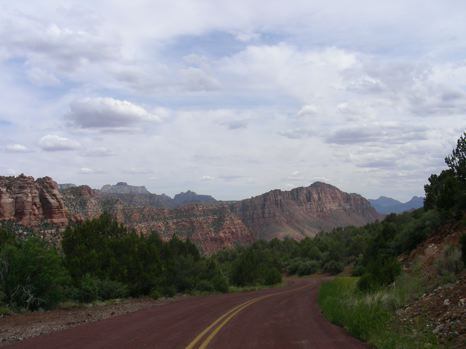 Zion National Park: Famous for its red rock formations, sandstone cliffs and dramatic canyons, Zion National Park in Utah is best experienced by hiking.
Zion National Park: Famous for its red rock formations, sandstone cliffs and dramatic canyons, Zion National Park in Utah is best experienced by hiking.
The most spectacular trail is Angel’s Landing, a steep and narrow climb that ends with a panoramic view of Zion Canyon. The trek takes about five hours round trip, and the trailhead is accessible by free shuttle. In addition to other popular trails like the West Rim Trail and Wildcat Trail, you can even do a “virtual” hike of Angel’s Landing by visiting the Zion Web site.
In addition to self-directed hiking, rangers lead guided hikes of 1-2 miles duration, and they also offer free evening presentations on topics like “Things That Go Bump in the Night” and “Starry Nights.” Horseback riding is available through Canyon Trail Rides from $40.
If you are crazy about views, Zion has plenty. The Zion Canyon Scenic Drive, which is only accessible by free shuttle, offers the opportunity to gawk at numerous vistas, plains and peaks. A less crowded alternative is Kolob Terrace Road, which you can drive to yourself and takes you to Lava Point for wonderful views across the canyons.
The red rocks of Zion are particularly stunning in the early morning and at dusk, which is the best time for photographers in the family to get the best snapshots. Keep your eyes open for California Condors, which have been growing in numbers since the late 1990’s when they were first bred in captivity and released into the park.
Admission is $25 per car for a seven days pass, and camping runs about $18 per night. More comfortable lodging can be found at the historic Zion Lodge (within the park boundaries), whose cabins go for about $159 per night.
Mt. Rainier National Park: The park’s namesake, the 14,000-foot Mt. Rainier, is the most famous landmark here, but visitors can also marvel at the glaciers, alpine firs, mountain cedars, cloud forests and wildflower meadows that are found within the park’s boundaries.
The park is easily accessible from Seattle and surrounding areas, which is convenient for both those who live nearby or are just visiting the city. Rock climbing and hiking are the most popular activities at Rainier, but if you’re not up for the strenuous climb to the summit, beautiful views of this active volcano can be had from just about anywhere in the park via either the road or one of the many trails.
Mowich Lake, the park’s largest and deepest lake, is accessible by car, but beware of the rough dirt road, which is sometimes closed due to weather conditions. Another nice drive is along Route 410 up to Chinook Pass, where you can see Rainier reflected in Tipsoo Lake.
Guided snowshoe walks are offered in winter, and in summer the park is also a great place to go fishing. Paradise Meadow is ideal for day hikes and wildflowers viewing. Kayaking is allowed on all but a few select lakes, and biking is allowed on most park roads.
Admission costs $15 per car and is valid for seven days. Camping will set you back about $8 – $15 per night. The recently renovated Paradise Inn costs about $104 per night and offers nice views of the park if you want an alternative to camping.
STATE PARKS
National parks tend to hog the limelight, but locals know that America’s 6,000 state parks can be just as beautiful and appealing, and often cheaper and less crowded.
Furthermore, many states offer a state park pass. In California for example, a Golden Poppy Pass costs $90 and is good for vehicle entrance at 97 parks. A Connecticut State Park pass costs $50 for locals and $75 for out-of-towners and gets you entrance to nearly 150 state parks and forests. In Colorado an annual pass costs $60 per vehicle. That will get you into 43 parks around the state where entrance fees usually cost about $6 per day. If you go to state parks several times a year, these passes can easily pay for themselves.
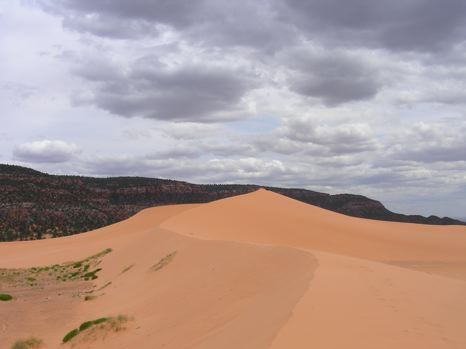 Coral Pink Sand Dunes State Park: The spectacular Coral Pink Sand Dunes State Park in Utah sprawls over 3,730 acres and boasts coral-colored dunes, red sandstone cliffs and forests.
Coral Pink Sand Dunes State Park: The spectacular Coral Pink Sand Dunes State Park in Utah sprawls over 3,730 acres and boasts coral-colored dunes, red sandstone cliffs and forests.
An alternative to Zion National Park to the north or the Grand Canyon to the south, this park is a mecca for off-road enthusiasts. Whether it be four-wheeling or ATV-ing, there are numerous trails and ample terrain to satisfy your urge to whip through salmon-colored sands.
But there’s also whitewater rafting, boating, fishing — and don’t forget rock-hounding.. The park’s terrain is home to numerous varieties of rare rocks, gemstones, and fossils, plus a collection of ancient pictographs at the bottom of South Fork Indian Canyon. Hundreds of varieties of wildlife also make their home in the park, including the Coral Pink Beetle (found nowhere else in the world) mule deer, jackrabbits, kit foxes, coyotes and many small rodents.
Entrance costs $5 per day, per vehicle, and camping costs $14 per night per site. There is no other lodging inside the park, but Springdale, Utah, 45 miles away, offers a variety of motels and hotels, including the historic Pioneer Lodge (about $129 per night).
Anza-Borrego Desert State Park: Only 90 miles from Palm Springs, California, the 650,000-acre Anza-Borrego Desert State Park is often overshadowed by the more famous Joshua Tree National Park to the north, but its unique characteristics make it memorable in its own right.
Eerie rockscapes sculpted over centuries create the feeling of being in another world, and the nearby Salton sea often looks like a mirage in the distance. The park’s Wild West atmosphere flows from the abandoned gold mines, the old stage coach routes, and the desert flora and fauna that varies as widely as the altitude.
For more, check out Anza-Borrego Desert State Park: A Quiet Alternative to Palm Springs.
Nature-lovers will marvel at the numerous varieties of cactus, the peninsular bighorn sheep, and the amazing pupfish, an ancient species that evolved to adapt to the harsh desert conditions. In winter massive blooms of wildflowers beckon visitors, and hikers will find that a section of the 2,560-mile-long Pacific Crest Trail passes through the park.
At only $6 the entrance fee is a steal, and camping costs about $20 per night. Those with a taste for luxury can book a room at the nearby Borrego Ranch Resort and Spa, which will set you back about $250 per night.
Colorado State Forest State Park: Far less crowded than nearby Rocky Mountain National Park, Colorado State Forest State Park is spread over 71,000 richly forested acres that encompass jagged peaks, alpine lakes, miles of trails and mountain wildlife.
Winter is prime season in the park, when snowmobiling, ice-fishing, sledding and snowshoeing are favored activities. In the warmer season horseback riding, off-roading and birdwatching are popular, as the park is home to eagles, hawks, owls, songbirds and broad-tail, rufous, black- chinned, and calliope hummingbirds. But birds aren’t the only critters you’ll find. In fact, the park is considered the moose-viewing capital of Colorado, with over 600 of the beasts to be observed year-round.
There are also more esoteric activities available, such as geocaching and yurt camping. For the uninitiated, geocaching is sort of like a high-tech scavenger hunt, where participants track down “caches” hidden in the park using GPS devices. It’s a fun way to explore the park while honing your technological skills.
Yurts are round tents on wooden frames that are similar those used by Asian nomads. Staying in one offers an unusual alternative to conventional tent camping. They are slightly more pricey than old-fashioned tents ($60-$110 per night versus $8-$18 per night), but the tradeoff is that yurts are slightly more sturdy and secluded.
Entrance to Colorado State Forest State Park is $6, which is a steal compared to Rocky Mountain, which costs $20 per vehicle to get in.
Raccoon Creek State Park: One of the largest and most beautiful state parks in Pennsylvania, the 7,572-acre Raccoon Creek State Park park features the beautiful 101-acre Raccoon Lake, a 314-acre wildflower reserve plus hunting, boating, hiking, and several areas of historic interest.
The park is located in southern Beaver County, not far from the state’s western border and within easy driving distance of Pittsburgh. The lake is home to dozens of species of fish including bluegill, sunfish, bullhead catfish, yellow perch, walleye, muskellunge, crappie, sauger, largemouth and smallmouth bass, and you’ll find brook and rainbow trout in the feeder streams. Hunters can shoot or trap deer, turkeys, rabbits, grouse, pheasants, squirrels and geese, but it’s recommended that you only observe the park’s namesake, the raccoon.
In addition to 16 miles of equestrian trails, there are also 44 miles of hiking trails which include five Adirondack shelters and tenting sites for backpackers who want to take multi-day treks.
Within the park’s borders you’ll find Frankfort Mineral Springs, which used to house a resort complex that drew visitors seeking the healing qualities of the mineral water. And at King’s Creek Cemetery, on the park’s southwestern boundary, many of the first settlers of the area are buried.
Lodging options include the spartan yet comfortable Lakeside Lodge, and traditional campsites. Camping costs about $15 per night.
By Karen Elowitt for PeterGreenberg.com
Related Links:
America the Beautiful: Five Hidden National Parks
America the Beautiful: Five More Hidden National Parks
Great Lesser-Known National Parks
Spotlight on America’s National Parks: Filmmaker Ken Burns’ Best Idea?
Cool Kids Programs at National Parks
The “Grand Dame” Hotels of Our National Parks







